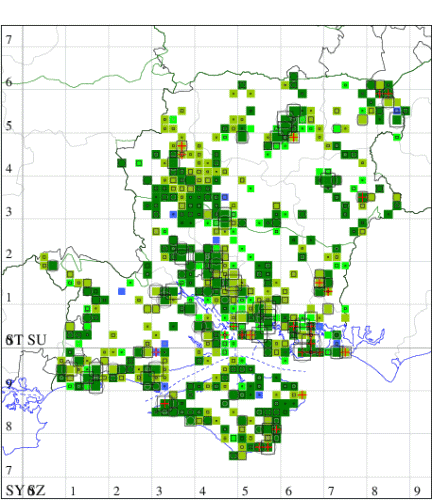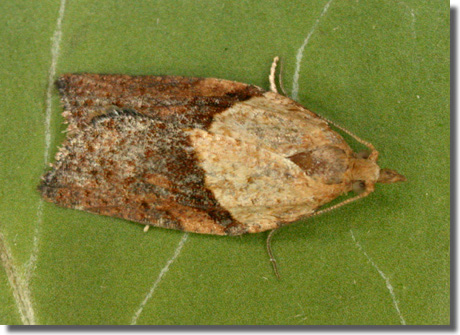Light Brown Apple Moth
Epiphyas postvittana
Checklist Number49.039 [B&F: 0998]
Verification
Record will be accepted (subject to date and location checks)
Classification
| Family: | Tortricidae |
| Subfamily: | Tortricinae |
| Genus: | Epiphyas |
| Species: | postvittana |
| Authority: | (Walker, 1863) |
Common in gardens throughout much of the country. Thoroughly naturalised, through accidental introduction in garden plants, this native of Australia was first reported in Britain from Cornwall in 1936, it has since expanded its range across most of the country, and can be abundant where it occurs. Shows a marked preference for urban gardens, remaining relatively rare away from towns, and despite its common name, is neither light brown, nor particularly fond of apple! Widespread and common in Hampshire and on the Isle of Wight. Wingspan male 16-21 mm, female 17-25 mm. The male is usually distinguished by the abrupt division of the forewing medially into a pale basal area and darker apical area, and the female by its large size and relatively elongate forewing, often with greatly reduced markings [Bradley]. Larva polyphagous on a wide range of plants, including Evergreen Spindle, causing sufficient damage to fruit trees to be a serious pest in some areas.


The abundance in each month is indicated as follows:
 No records
No records Very occasional
Very occasional Irregular
Irregular Uncommon
Uncommon Off-peak, but not unusual
Off-peak, but not unusual Off-peak, but not unusual
Off-peak, but not unusual Main flight time
Main flight time| J | F | M | A | M | J | J | A | S | O | N | D | |
|---|---|---|---|---|---|---|---|---|---|---|---|---|
| Adult |  |  |  |  |  |  |  |  |  |  |  |  |
| Larval |  |  |  |  |  |  |  |  |  |  |  |  |



